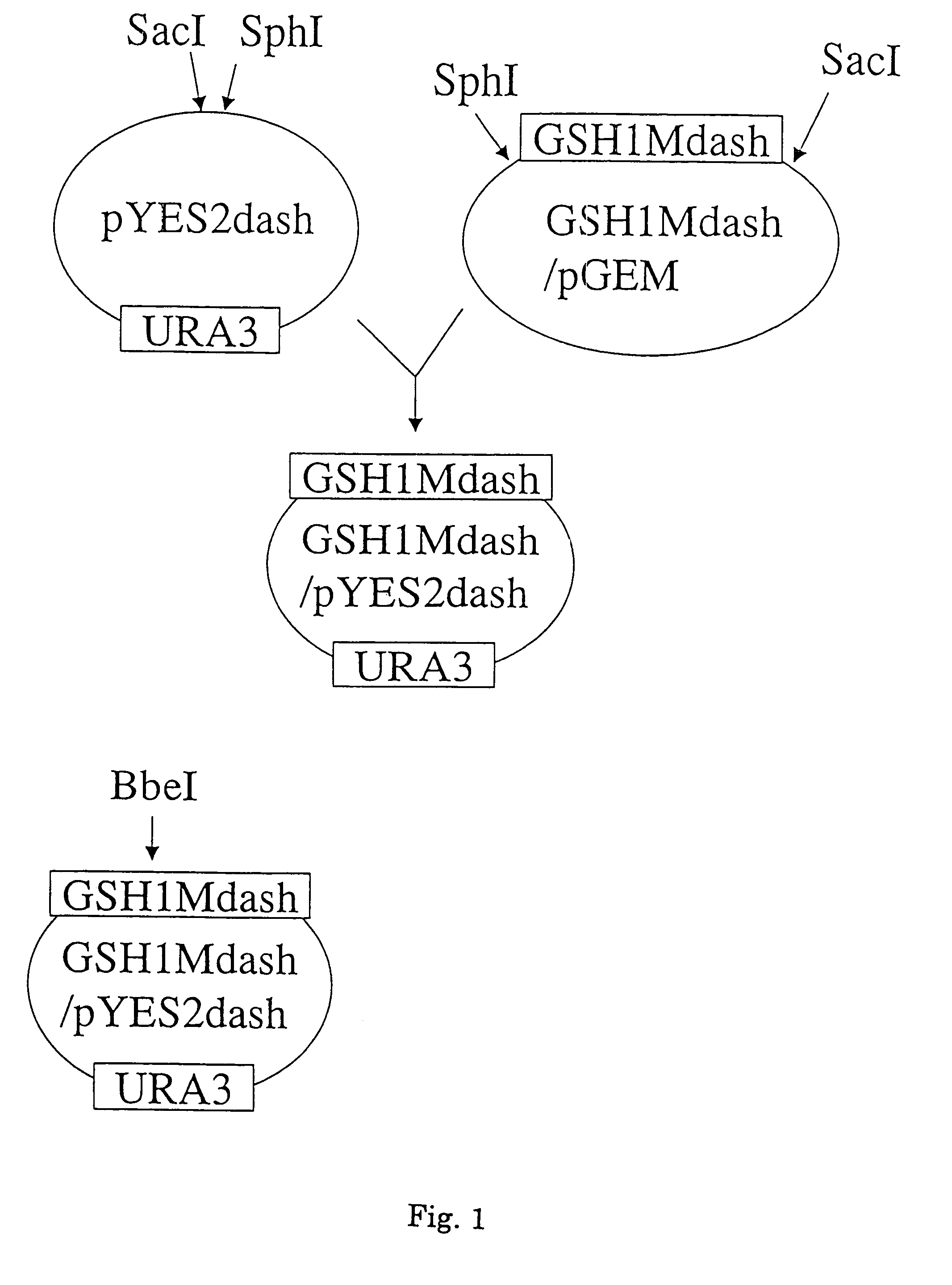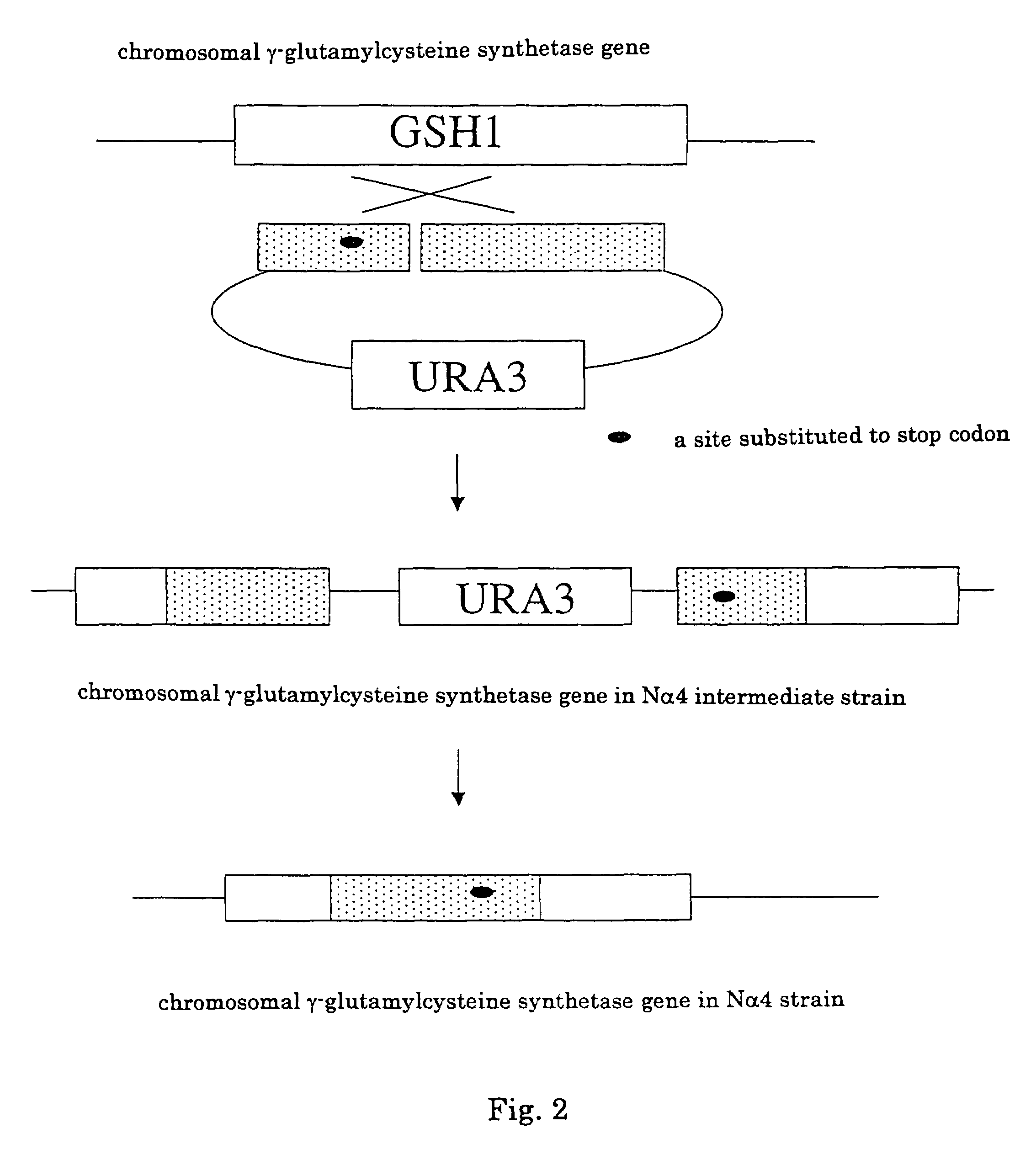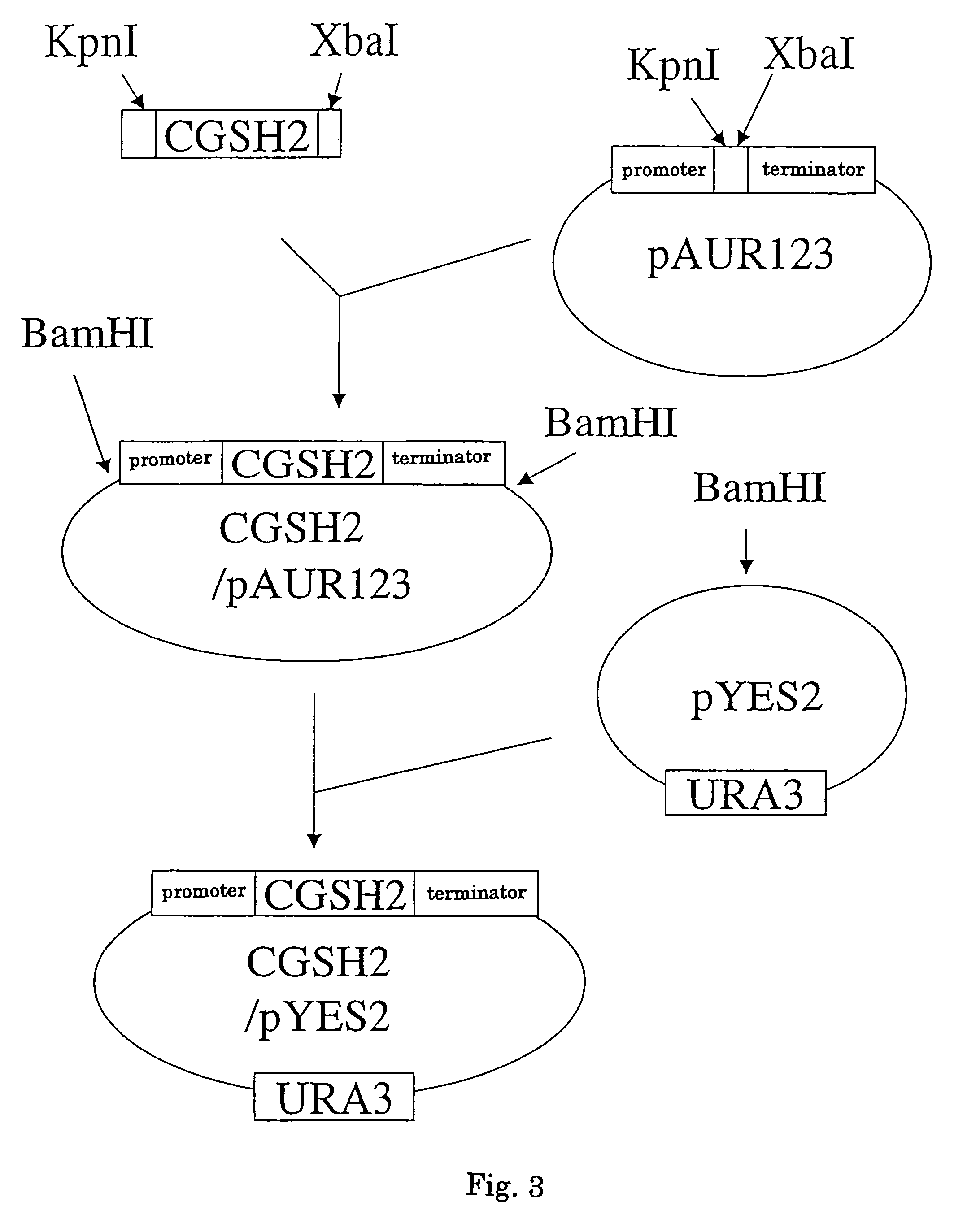Gene encoding glutathione synthetase from Candida utilis
a technology of gene encoding and glutathione, which is applied in the field of gene encoding glutathione synthetase from candida utilis, and achieves the effect of less need of paying
- Summary
- Abstract
- Description
- Claims
- Application Information
AI Technical Summary
Benefits of technology
Problems solved by technology
Method used
Image
Examples
reference example 1
Production of Gene Disruption Cassette for Glutathione Synthetase of Candida utilis
[0147]PCR was performed by using chromosomal DNA prepared from Candida utilis ATCC15239 as a template and the primers of SEQ ID NOS: 49 and 50. PCR was performed by using Pyrobest (Takara Shuzo Co.) according to the manufacturer's instruction under the conditions of a reaction at 98° C. for 2 minutes, followed by 40 cycles of reactions at 98° C. for 20 seconds, 55° C. for 30 seconds and 72° C. for 2 minutes.
[0148]The amplified product was purified by using QIA Quick PCR Purification Kit (QIAGEN Co., Cat. No. 28106), and the purified product was added with adenine at the termini and ligated to the pGEM-T Easy vector. The addition of adenine was performed by using AmpliTaq (ABI, Code N8O8-0161) and 2.5 mM DATP instead of dNTP by a reaction at 72° C. for 10 minutes. Subsequently, nucleotide sequences at two sites in the cloned fragment were replaced by site-directed recombination using QuikChange Site-D...
reference example 2
Acquisition of Uracil Auxotrophic
[0156]Candida utilis ATCC15239ura-strain
[0157]ATCC15239ura-strain, a uracil-auxotrophic strain derived from ATCC15239, was obtained in a conventional manner (the technique of Luis et al., refer to FEMS Microbiology Letters 165, 335-340 (1998)). Since the ATCC15239ura-strain was complemented by the URA3 gene as described later, this strain is expected to be a ura3 mutant.
reference example 3
Acquisition of γ-glutamylcysteine Producing Yeast (ATCC15239Δgsh2 strain) Derived from Candida utilis
[0158]First, the ATCC15239ura-strain was cultivated overnight at 30° C. in a YPD test tube medium. The broth culture was inoculated in a YPD flask medium (500 ml Sakaguchi flask, 50 ml filled) and cultivated at 30° C. with shaking. The cells were collected in the logarithmic growth phase and washed three times with a 1 M sorbitol solution cooled to 4° C. The washed cells were suspended in a cooled 1 M sorbitol solution. The suspension was added with 50 μl (2 μg) of the glutathione synthetase gene disruption cassette, mixed well in a 0.2 cm cuvette and subjected to electroporation by using Gene Pulser System (BioRad Co.) with impedance of 200 Ω, capacitance of 125 μF and set voltage of 1.5 kV. 1 ml of cooled 1 M sorbitol was poured into the cuvette, and the cuvette was cooled on ice for 10 minutes. The cell suspension was spread over an SD plate and cultivated at 30° C.
[0159]The stra...
PUM
| Property | Measurement | Unit |
|---|---|---|
| temperature | aaaaa | aaaaa |
| pH | aaaaa | aaaaa |
| pH | aaaaa | aaaaa |
Abstract
Description
Claims
Application Information
 Login to View More
Login to View More - R&D
- Intellectual Property
- Life Sciences
- Materials
- Tech Scout
- Unparalleled Data Quality
- Higher Quality Content
- 60% Fewer Hallucinations
Browse by: Latest US Patents, China's latest patents, Technical Efficacy Thesaurus, Application Domain, Technology Topic, Popular Technical Reports.
© 2025 PatSnap. All rights reserved.Legal|Privacy policy|Modern Slavery Act Transparency Statement|Sitemap|About US| Contact US: help@patsnap.com



